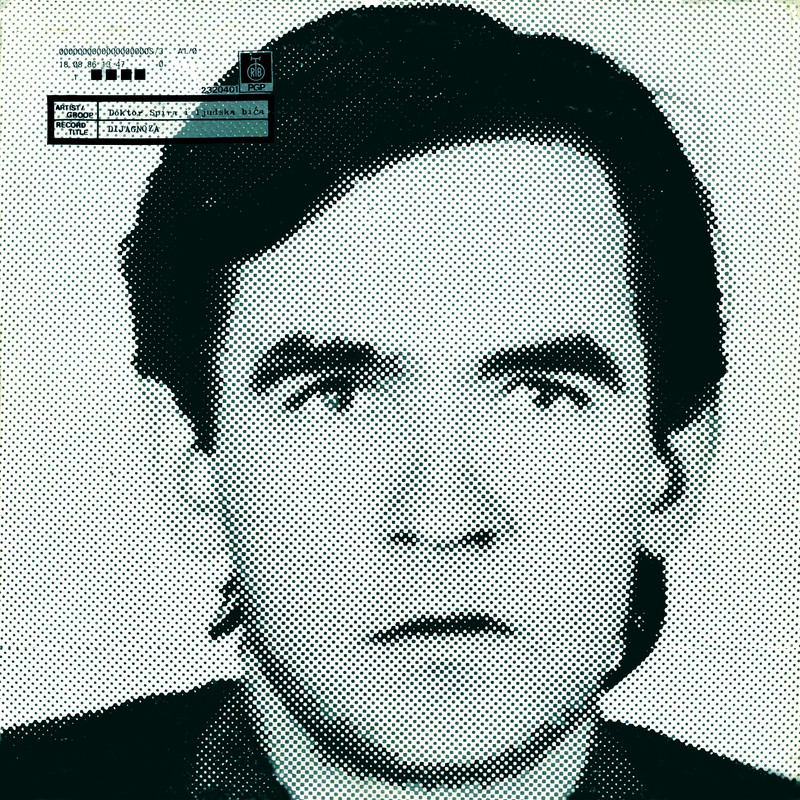
The unique Belgrade singer-songwriter DUŠAN MIHAJLOVIĆ SPIRA (acoustic guitar, vocals) started his musical career during the late 1972 in an acoustic rock duo called Mira i Spira, also featuring Mirjana Marković (vocals). After a series of performances on happenings, especially the ones organized by Pop Mašina members in the Belgrade Sports Hall, Mihajlović achieved a major affirmation after the inclusion of his song "Prvi sneg" into the repertoire of the acoustic rock band Suncokret, being eventually released on their debut album "Moje bube" in 1977. During the late 1970s, Mihajlović had given up the acoustic sound, turning towards the current trends of the time, the upcoming New Wave music, forming the band DOKTOR SPIRA I LJUDSKA BIĆA, which in its initial period had changed numerous lineups. In the lineup Mihajlović (vocals, acoustic guitar), Zoran Dašić (guitar), Stevan Milinković (bass guitar) and Želimir Vasić (drums), the band recorded the debut album "Dijagnoza". The album, produced by Mihajlović himself, featured the unusual and original songs "Buđenje", "Ima dana kada mene moja duša boli", "Dg. Paranoia", "Uvek isto zbogom", and "Igrač na žici", bearing a strong narrative notion of alienation. Recorded in 1980 at the Enco Lesić "Druga Maca" studio in Belgrade and mastered at the Trident studio in London, it featured guest appearance by backing vocalists Mirjana Marković and former DAG member Dragan Popović, the latter being a co-writer of the song "Psychoneu Rosis". At the time, Mihajlović had a cult status among the Belgrade musicians and fans, however, this did not affect the record labels to release the album. Since the Yugoslav record labels refused to release the album, during 1981, Mihajlović went to London and financed himself the printing of 50 copies of the album, which he brought to Belgrade and distributed them to his friends. The LP had a white paper cover without any images and the track listing was written by hand. The album promotion of the exclusive album release was held on December 1981 at the Atelje 212. The band continued performing the material until 1985 when they disbanded. In 1986, the PGP-RTB editor had become the pop rock mucician Oliver Mandić. In a discussion with rock musician Bora Đorđević at a local bistro Mandić claimed that he, as the new editor, would bring changes to PGP-RTB. Đorđević, annoyed with Mandić's statements, made a bet with him to release "Dijagnoza". Without any promotion, the album was released in a minimal printing of 2,000 copies, and quickly sold out. At the time Mihajlović had quit performing and constructed a mini metal guitar and mini wooden bass guitar amp under the "Žuto pile" brand name. However, despite trying to make a breakthrough on the music equipment market, it turned out to be unsuccessful. In 1987, Mihajlović secretly recorded the second studio album, "Dizajn za stvarni svet", featuring diverse musical influences which could stylistically be called world music, even though the expression was not used at the time, combined with krautrock, gothic rock, dance music, boogie, jazz and atonal music. Following the musical and production trends of the time, Mihajlović retained the same lyrical style on the new material as on "Dijagnoza", sung under the domestic influences of such vocalists as Milan Mladenović and Vlada Divljan. The following year, he had moved to London where he currently resides. (from wikipedia)


Nema komentara:
Objavi komentar